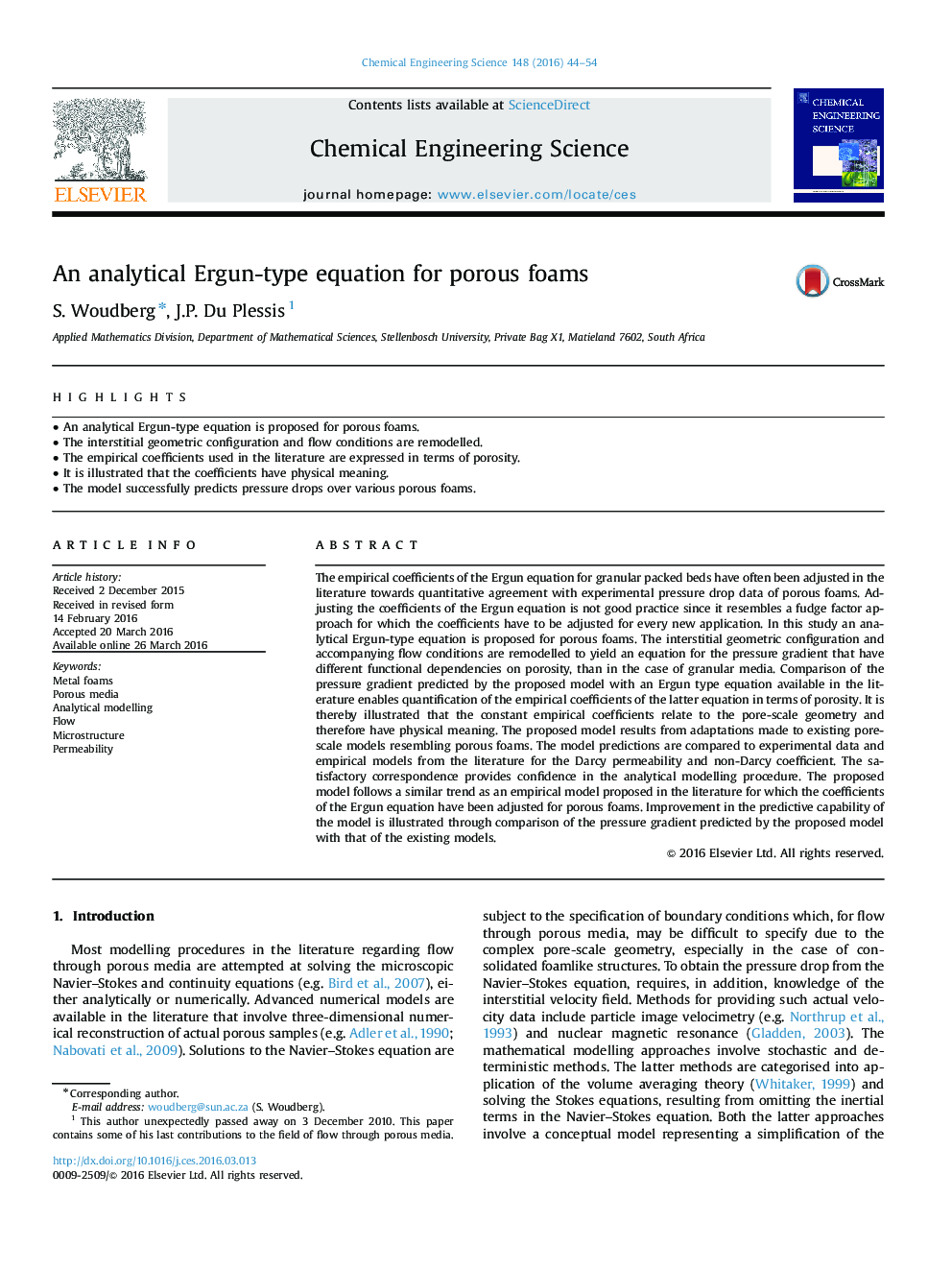| Article ID | Journal | Published Year | Pages | File Type |
|---|---|---|---|---|
| 154395 | Chemical Engineering Science | 2016 | 11 Pages |
•An analytical Ergun-type equation is proposed for porous foams.•The interstitial geometric configuration and flow conditions are remodelled.•The empirical coefficients used in the literature are expressed in terms of porosity.•It is illustrated that the coefficients have physical meaning.•The model successfully predicts pressure drops over various porous foams.
The empirical coefficients of the Ergun equation for granular packed beds have often been adjusted in the literature towards quantitative agreement with experimental pressure drop data of porous foams. Adjusting the coefficients of the Ergun equation is not good practice since it resembles a fudge factor approach for which the coefficients have to be adjusted for every new application. In this study an analytical Ergun-type equation is proposed for porous foams. The interstitial geometric configuration and accompanying flow conditions are remodelled to yield an equation for the pressure gradient that have different functional dependencies on porosity, than in the case of granular media. Comparison of the pressure gradient predicted by the proposed model with an Ergun type equation available in the literature enables quantification of the empirical coefficients of the latter equation in terms of porosity. It is thereby illustrated that the constant empirical coefficients relate to the pore-scale geometry and therefore have physical meaning. The proposed model results from adaptations made to existing pore-scale models resembling porous foams. The model predictions are compared to experimental data and empirical models from the literature for the Darcy permeability and non-Darcy coefficient. The satisfactory correspondence provides confidence in the analytical modelling procedure. The proposed model follows a similar trend as an empirical model proposed in the literature for which the coefficients of the Ergun equation have been adjusted for porous foams. Improvement in the predictive capability of the model is illustrated through comparison of the pressure gradient predicted by the proposed model with that of the existing models.
